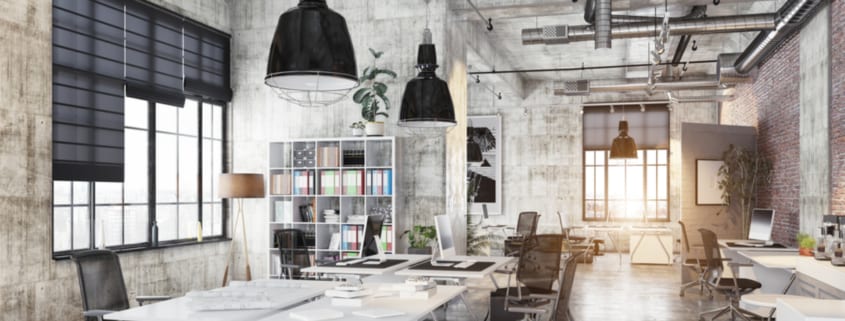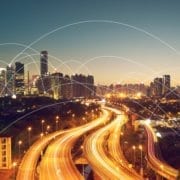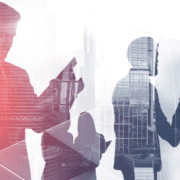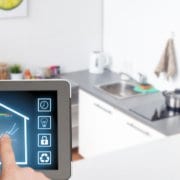Workplace of the Future: Challenges, Trends, and Implications for Modern Office Spaces
In recent years, some fundamental shifts have been occurring in the office, and the traditional workplace model is becoming increasingly rare. Traditionally, every employee was expected to come into the office and sit at their desk, working the 9-to-5 (or longer). In today’s technology-driven world, employees are working more flexible hours, from a sofa in the office, from their kitchen at home, in a coffee shop lounge, or even out on a beach. And surprisingly (or perhaps not), productivity has never been higher. It’s less about where the work gets done and more about how the work gets done. And in an era where workplace culture is more important than ever before, office functionality and design can have a big impact on productivity, as well as employee acquisition and retention.
Office Space Challenges Driving Change
There are many new trends and challenges at play in the modern workplace, forcing companies to adapt or get left behind.
A Multi-Generational Workplace
There are now up to five generations in the workplace. As people live longer, their work-life expectancy is also expanding, which in turn extends the overlap between generations. While this situation presents the opportunity for people to grow and learn from one another, it also presents a challenge, as each of these generations utilizes different working, communication, and collaboration styles.
Rise in the Remote Workspace
A 2017 Gallup survey found that more American employees are working remotely and for longer periods of time, and over 40% of employed Americans spend at least some time working remote. Now, an increasing number of job-seekers take flexible scheduling and work-from-home opportunities into consideration when deciding to take or even leave a job. And working off-site has become less of an amenity and more of a key business strategy.
Increased Collaboration
As companies break down organizational silos and become more aligned, their team members are increasingly collaborating with others beyond their own department. This new work model requires more flexible space that allows for both team time and quiet, thinking time.
Trends in Modern Office Space Design
So, we have discussed some of the top challenges organizations face with the 21st-century workforce. Now let’s take a look at some of the implications for office layout and design.
Open Plan Office, 3.0
Traditional layouts featured private offices for executives around the exterior of the office and cubicles for lower-level employees crammed into the center, generally promoting a hierarchical workflow. Phase 2 involved an open floor plan, which features large open spaces and minimizes the presence of small, enclosed rooms such as private offices. Four out of five offices now have an open floor plan, in hopes of injecting more creativity, communication, and collaboration and imitating the look and feel of the “cool start-ups”. However, this type of layout has been found to be prone to distraction and thus a loss in productivity. The solution was creating more deliberate spaces – sometimes referred to as Activity-Based Working (ABM); these include seating clusters for small group meetings, open areas for hanging out (such as in the break room), and closed-off places for quiet or private tasks. This format accommodates different work styles and various employee needs.
The Demand for More Amenities
In the war for talent, companies are offering more and more amenities to make their employees’ lives easier, boost productivity, and decrease stress. According to a 2018 report by HqO, fitness and food are the two most in-demand office amenities. Think on-site cafes, restaurants, and cafeterias, which offer the convenience of healthy meals and coffee. Modern fitness centers give employees the opportunity to squeeze in a workout during lunch or immediately before or after work. Similarly, stand-up or even treadmill desks get employees up and out of their seats. Further, libraries and lounges give employees a space where they can take a break or relax without having to leave the office.
Rise of the Smart Office
Technology is changing the way people live, work, and play and at this point affects nearly every aspect of our lives. A technology-enabled office empowers employees to work smarter and faster, driving productivity and bottom-line results. Technological needs include having computer and software upgrades, smartboards, wireless charging ports, a good Wi-Fi signal, and even virtual reality systems. Even features such as smart lighting, cooling, and air quality control can have a big impact on alleviating common office issues.
Offices Go Green… Literally
Most employees spend more consecutive, waking hours at work than anywhere else, including their own home. And due to many factors, from office location (a 19th floor office?!) to just having a full schedule, many people are challenged to find time to get outside. So, why not bring the outside indoors? Studies have shown that having natural light and plants inside the office, from green walls and live trees to potted plants and bamboo walls, can boost productivity by up to 15%. Perhaps most famously, Amazon took this concept to the extreme with their biodome, known simply as The Spheres, which boasts over 40,000 plants and is intended to inspire creativity, improve brain function, and drive innovation.
The future workplace calls for a deviation from long-held beliefs as to what an office should look like. While it may be a fluid process of changing and improving, the modern workspace does and will continue to play a critical role in organization productivity, company culture, and employee acquisition and retention.











